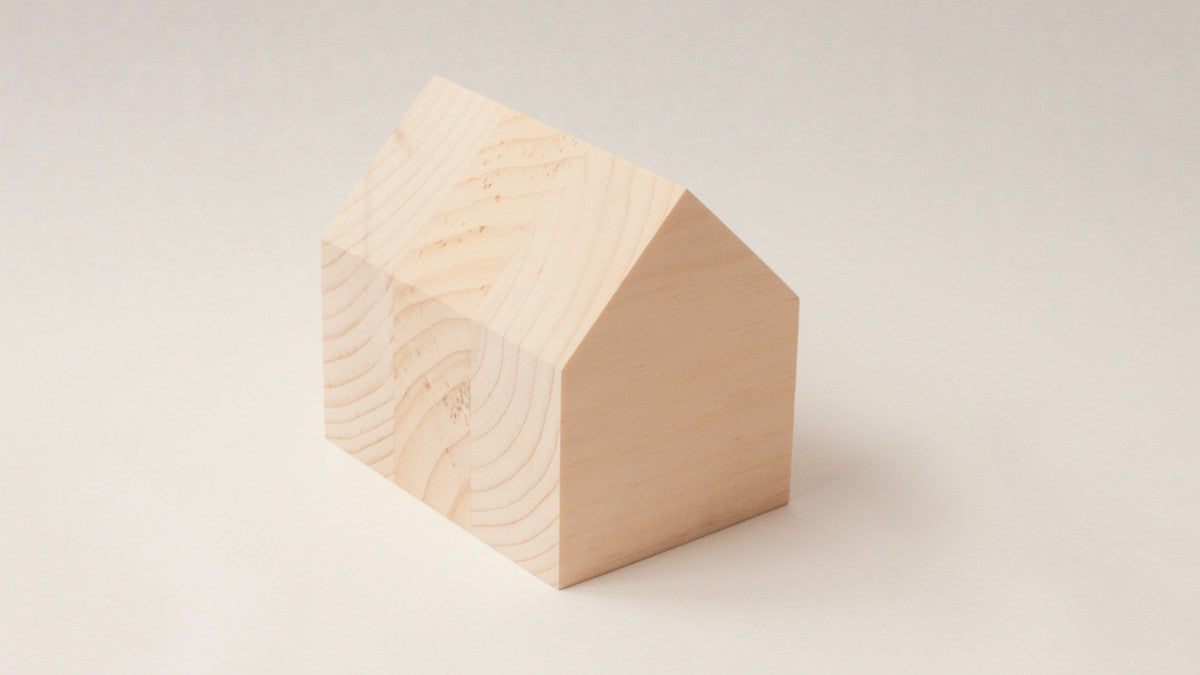
The following is a guest post by Josianne Pouliot. She’s an interior designer and President of Atelier Praxis, an interior design studio located in Montreal. I spoke of her two previous post,The Tiny House movement part 1 and 2. I must first and foremost say that I have no financial interest into her company. The reason I think her case is interesting is that, well, apart from the fact that she’s building a Tiny House and documenting the process all along on Facebook, her motivations aren’t only financial but also the result of a reflection on urban living in 2015.
Therefore I asked her if she’d be willing to write a guest post on our blog about what to consider when moving into a “smaller” life. So without further ado, I pass the keyboard to her.
This post will cover a few elements to keep in mind while you’re taking the first steps toward living in a smaller space.
Before going any further though, I’d like to talk a little bit about the best mindset to adopt for living well in a smaller home. If you’re head is not clear about it, than you might not be ready for downsizing.
So, what is this famous mindset we should adopt when preparing a transition towards a smaller space?
Of course, there isn’t only one acceptable way of seeing things when you’re thinking about changing your way of life. After all, we all have our own reasons for wanting some change! But better be realistic about what it implies than not, and if your objectives are aligned with your interests, than it’s even better.
From week to week, the Tiny House movement becomes less marginal. We are talking more and more about it, so more people began to think about this way of life more seriously, as it now appears it can be a way.
Let’s be clear about it: this is not a fad. Those who are turning themselves toward this lifestyle only because it’s becoming popular will be disappointed if they did not take the time to think about the changes needed in their own life to make it a success.
Humans adapt to their environment. They become more demanding when they think they are financially fit to have more (even when using credit to pay for goods) and demand less when they try to survive. We have essential needs that are quickly followed by a host of secondary ones, which change according to each personality. Each person is the only one able to distinguish the essential from the unnecessary for himself.
But where to draw the line between these two type of needs? Where to find the balance between the minimum we can have and maximising our superfluous desires? What would be the tipping point that would translate in an environment that makes us happy, covers our basic needs but provide just enough extra to feel comfortable?
Now, I’m not talking about survival. And I’m certainly not saying you should restrain yourself to eat, sleep and breathe! I’ll be honest with you: having access to internet is on top of my secondary needs list.
What you should ask yourself is: What would correspond to a sustainable consumption attitude, an attitude that would reflect your real needs and not your will to spend money for every temptation?
Know your priorities
It is essential to understand and assume how we use our living space and our objects.
Thinking about usage priority for a space means what do you really need over what kind of space would look awesome so you can showcase it to friends and family. Take a moment to think about it and it wouldn’t be surprising you realize that some of your space is not underexploited.
For instance, if you always eat on your kitchen counter, assume that a 14’x20’ dining room might not be your priority. Of course, when you have friends over for dining, it’s useful. But using it only once in a while, you’ll have to make choices. The good news is, it might hide an opportunity. Why not include the dining function into modular elements? Something that can transform itself easily.
A modular space, but not pushed to the extreme
It is important that you choose carefully the elements that will be modular. When something you do once a day or more requires your transform the space, it can quickly become irritating.
Custom furniture integrated to the space and objects adapted to small spaces: a priority
The way we interact with our day to day objects has a crucial impact on our well being in our home. Often, square footage doesn’t even matter.
Possessing functional things that answer to a specific need or even more than one is key. Think about it as living in smaller but better organised versus living in a bigger badly exploited space.
Custom furniture and built-in furniture allow us to use every bit of space and to optimize every square foot. Custom also means it’s tailored to you specific needs. In such small spaces as micro-houses, it is a must to me.
Think the space in terms of cubic feet instead of square feet.
Micro-houses that built on wheels are usually limited to a certain width. That being said, height can be generous and put to good use when planning the interior. As we propose in our prototype, the play between the levels and various space elements that can be installed higher allow for maximising storage while creating a dynamic space.
Find your space
There’s a good chance a micro-habitation is not and will never be for you. Each one of us has its own limits, needs and desires.
I’ve read a few comments on pages that promote Tiny House movement saying that proposed models don’t take in account family life. That’s the truth!
Considering a micro-house on wheel has a square footage of 180 to 250 sq. ft., I wouldn’t think about it for myself if I had a family of five. Let’s remember that the main goal of choosing a smaller home is living rather than surviving! If your living environment has a negative impact on you because if oppresses you physically, it won’t be a whole lot better than being financially oppressed!
Find your minimum.
Living in smaller conveys this idea of living out of the box that society imposes us: let’s not change a box for another.
If we leave aside micro-houses on wheel that must conform to road safety laws for a moment, there’s a bunch of options available. On average, we consider a house to be MICRO between 100 and 300 square feet, MINI between 300 and 500 square feet and SMALL between 500 and 700 square feet. There’s a lot of opportunities that will allow you to find you place in this new avenue that is think small.
I hope this article will guide you into the preparation and the planning of your project. I’m available if you need help!
Josianne.
Josianne provides a variety of interior design services. You can reach her at josianne[a]atelierpraxis.ca and visit her website at www.atelierpraxis.ca
← Older post Newer post →
